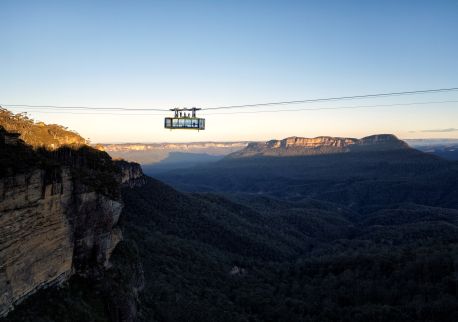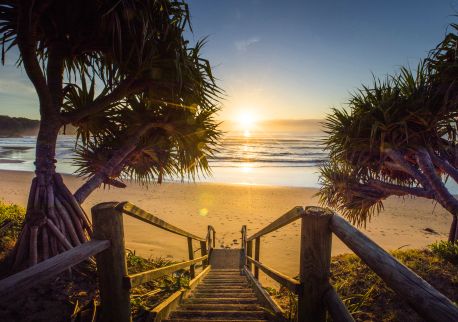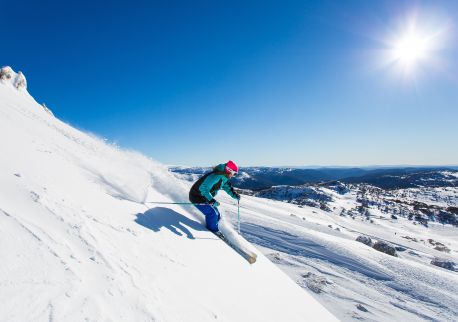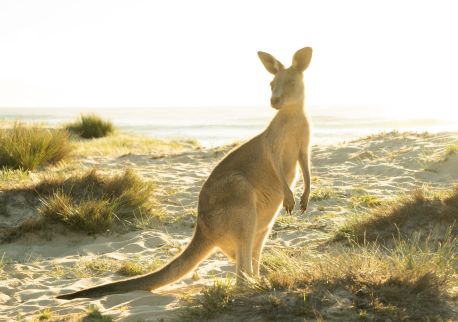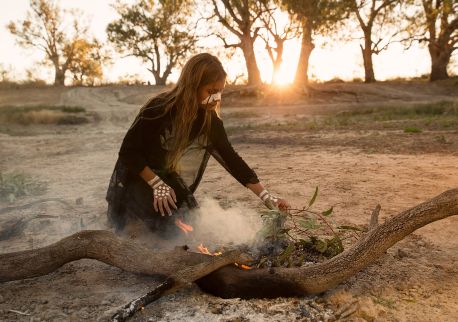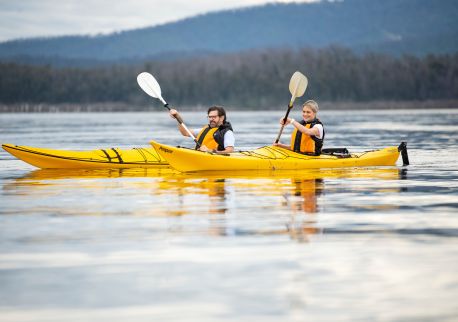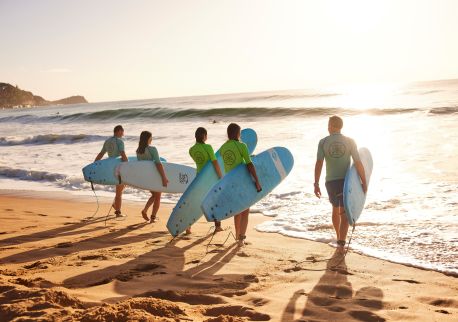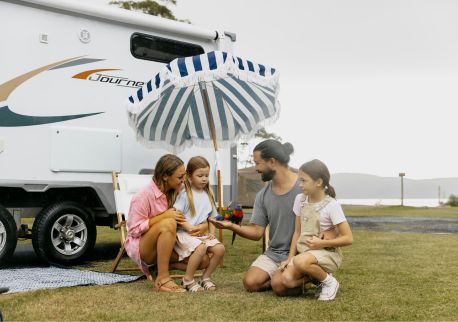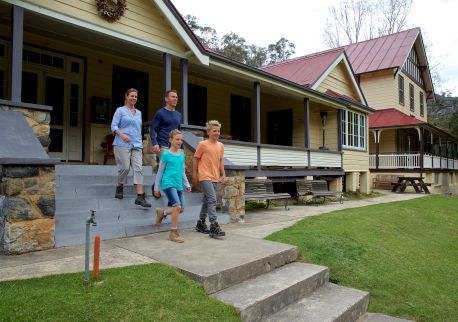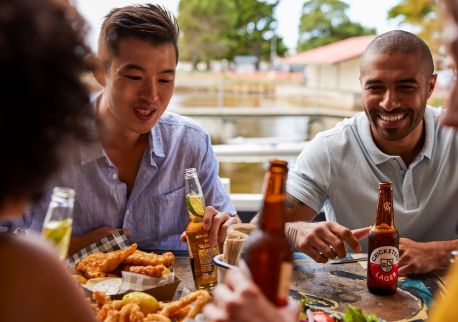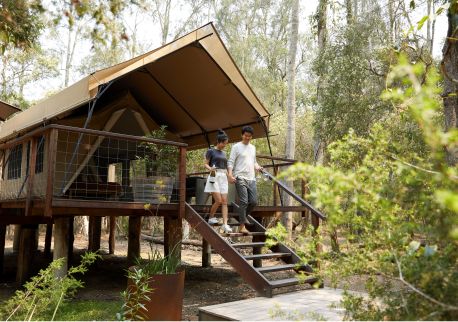Recognised as the most extraordinary natural wonders and cultural treasures on earth, UNESCO World Heritage Sites are truly remarkable. NSW is fortunate enough to be home to six of them – how many have you checked off your bucket list?

Destination NSW
- 4 min read
Sydney Opera House
NSW’s most recognisable landmark is also our most famous UNESCO World Heritage Site. Perched on the edge of Sydney Harbour, the Sydney Opera House is an architectural masterpiece and a temple to creativity. Celebrating its 50th anniversary in 2023, The House is one of Australia’s cultural icons and has played host to the world’s greatest performers. Book a guided tour to learn the stories from within the magnificent sails, dine at the exquisite Bennelong, or admire the view from outside with a drink at Opera Bar.
How you can experience the Sydney Opera House:
- Go behind the curtain on a backstage tour.
- Dine beneath the sails at Bennelong.
- Learn the secrets of The House on an architecture tour.
- See the sail sparkle at sunset from Opera Bar.
- Take a junior adventure tour for family fun.
Gondwana Rainforests of Australia
The world’s largest area of subtropical rainforest, the Gondwana Rainforests of Australia is made up of 40 separate reserves stretching from Newcastle to Brisbane. This ancient wilderness is more than 180 million years old, dating back to the early days of life on earth. It protects rare and threatened plant species, as well as thousands of unique birds, animals and reptiles. The national parks that make up the Gondwana Rainforests are threaded with walking and hiking trails, mountain bike tracks, creeks and waterfalls, and secluded camping areas.
How you can experience the Gondwana Rainforests of Australia:
- Get a birds’ eye view from the Skywalk in Dorrigo National Park.
- Kayak along the Barrington River in Barrington Tops National Park.
- Hike the 45km Gibraltar-Washpool World Heritage Walk.
- Admire the enormous Wollomombi Falls in Oxley Wild Rivers National Park.
- Spend a night under the stars at a national park campsite.

Family taking in the views at Crystal Shower Falls, Dorrigo National Park
Lord Howe Island
About 600km east of the NSW coastline is Lord Howe Island, a Pacific island paradise surrounded by the most southerly coral reef in the world. Around 75 per cent of the island is a permanent park preserve, protecting its dramatic volcanic landscape and the unique bird species that live there. The surrounding waters are also a protected marine park and are known for their exceptional diving. Visitor numbers are strictly limited to preserve the remarkable environment and everyone gets around the island on bicycles.
How you can experience Lord Howe Island:
- Scuba dive off Balls Pyramid, the world’s tallest sea stack.
- Tackle the epic Seven Peaks Walk over five days.
- Hand feed the friendly fish at Ned's Beach.
- Hike to the top of Mount Gower and look out for rare woodhens.
- Plan an ultra-luxury break at Capella Lodge.

Mount Lidgbird and Mount Gower, Lord Howe Island - Credit: Tom Archer
Greater Blue Mountains Area
One of Australia’s greatest natural wilderness areas is just 90min from Sydney. The Blue Mountains get their name from the blue hue created by the vast eucalypt forests releasing tiny droplets of oil that mix with water vapour and sunlight. Beneath this iconic haze lies more than one million hectares of rugged bushland, hiking trails, tumbling waterfalls, sandstone escarpments, and more than 400 species of animals and birds. Breathe in the crisp mountain air, soak in the spectacular vistas and switch off from the world.
How you can experience the Greater Blue Mountains Area:
- Admire the iconic rock formation the Three Sisters from Echo Point.
- Catch the world’s steepest passenger train deep into the forest at Scenic World.
- Try canyoning or abseiling with the Blue Mountains Adventure Company.
- Spend the night at the grand art deco Hydro Majestic Hotel.
- Look to the skies with an astronomer on a Blue Mountains Stargazing tour.

The Three Sisters, Blue Mountains
Australian Convict Sites
Around 166,000 men, women and children were transported to Australia as convicts between 1788 and 1868. They built many of the first buildings, roads and mines in the new colony, and 11 of these have been recognised as World Heritage Sites. Four of these can be found in Sydney – Hyde Park Barracks, Cockatoo Island, Old Government House and Parramatta Park, and the Old Great North Road. Explore these historic sites and connect with Sydney’s colonial past, learning the stories of the people who helped build the city.
How you can experience the Australian Convict Sites:
- Learn about Cockatoo Island’s turbulent past on a guided Convict Prison Tour.
- Take a spooky ghost tour of Old Government House.
- Walk a 9km section of the Old Great North Road in Dharug National Park.
- Camp on the edge of the water at Cockatoo Island.
- Listen to convict tales on an immersive audio tour of Hyde Park Barracks.

Hyde Park Barracks, Sydney
Willandra Lakes Region
In the far west of NSW, an ancient stretch of sand and rock holds the secrets of some of the world’s earliest human habitation. In the 1970s, human remains dating back more than 40,000 years were discovered in Lake Mungo in the Willandra Lakes Region. Dubbed Mungo Man and Mungo Lady, they are the oldest remains ever found in Australia. Evidence of fire pits, stone tools, animal bones and calcific plants have also been discovered in the area. Explore these striking desert landscapes and discover their connections with modern Indigenous culture.
How you can experience the Willandra Lakes Region:
- Join a guided tour of the distinctive Walls of China.
- Learn about the area’s pastoral history at the 150-year-old Mungo Woolshed.
- Glamp inside the national park at Mungo Lodge.
- Follow the 70km Mungo Self-Guided Drive Tour across the ancient lake bed.
- Admire the vast night sky on a Mungo National Park Full Moon Tour.

Mungo National Park, Mungo

